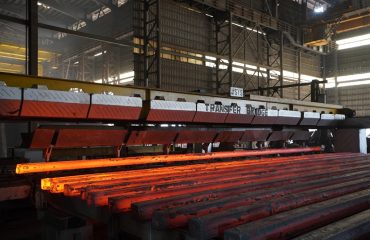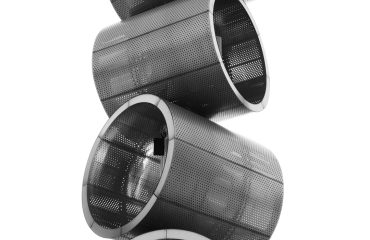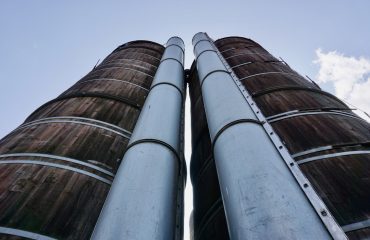body { font-family: sans-serif; line-height: 1.6; }
h1, h2, h3 { color: #333; }
The steel industry, a cornerstone of global infrastructure and manufacturing, faces a monumental challenge: decarbonizing its operations to achieve net-zero emissions. This ambitious goal requires a fundamental shift in production methods, embracing innovation and collaboration across the entire value chain. This post delves into the complexities of achieving net-zero targets in steel production, exploring the hurdles, potential solutions, and the transformative impact on the industry’s future.
The Carbon Footprint of Steelmaking: Understanding the Challenge
Steel production is intrinsically energy-intensive and currently relies heavily on fossil fuels, primarily coal, for its energy needs. The blast furnace-basic oxygen furnace (BF-BOF) route, the dominant steelmaking process globally, is a significant contributor to greenhouse gas emissions. The process involves reducing iron ore with coke (derived from coal), releasing substantial amounts of carbon dioxide (CO2) into the atmosphere. Further emissions arise from the use of natural gas and electricity in various stages of the process, from raw material extraction to downstream processing. Quantifying this carbon footprint is crucial for setting realistic net-zero targets and developing effective decarbonization strategies. Life cycle assessments (LCAs) are increasingly utilized to comprehensively analyze the environmental impact of steel production, from ore mining to the end-of-life of steel products.
Emerging Technologies for Decarbonizing Steel Production
The pursuit of net-zero steel hinges on the development and deployment of innovative technologies. Several promising avenues are currently under investigation:
- Hydrogen-based steelmaking: Replacing coke with hydrogen as a reducing agent in the steelmaking process significantly reduces CO2 emissions. However, producing green hydrogen (via electrolysis powered by renewable energy) is crucial to avoid shifting emissions elsewhere. Research and development efforts are focused on optimizing hydrogen-based direct reduction processes and integrating them with electric arc furnaces (EAFs).
- Carbon Capture, Utilization, and Storage (CCUS): CCUS technologies capture CO2 emissions from steel plants and either utilize them in other industrial processes or store them underground. While effective in mitigating emissions, CCUS is currently expensive and faces challenges related to scalability and long-term storage security.
- Electric Arc Furnaces (EAFs): EAFs utilize electricity to melt scrap steel, significantly reducing CO2 emissions compared to BF-BOF routes. Increasing the proportion of scrap steel used in steelmaking is a crucial strategy for decarbonization. However, the availability of sufficient high-quality scrap steel is a limiting factor.
- Biomass-based fuels: Utilizing biomass as a sustainable alternative to coal in the blast furnace process can reduce CO2 emissions, but challenges remain in ensuring the sustainable sourcing of biomass and managing potential air pollution.
Policy and Regulatory Frameworks: Driving the Transition
Government policies and regulations play a critical role in accelerating the transition to net-zero steel. Carbon pricing mechanisms, such as carbon taxes or emissions trading schemes, can incentivize steel producers to adopt cleaner technologies. Furthermore, supportive policies for research and development, investment in renewable energy infrastructure, and the development of robust carbon accounting frameworks are essential. International collaboration is also crucial to establish consistent standards and avoid carbon leakage, ensuring a level playing field for steel producers globally. Stricter emission regulations and targets for the steel industry are driving investment and innovation in cleaner technologies.
The Role of Collaboration and Innovation in Achieving Net-Zero
Achieving net-zero emissions in steel production requires a collaborative effort involving steel producers, technology developers, researchers, policymakers, and consumers. Open innovation and the sharing of best practices are crucial for accelerating technological advancements and reducing the cost of decarbonization technologies. Public-private partnerships can foster the development and deployment of innovative solutions. Furthermore, increased consumer awareness and demand for sustainably produced steel can drive the market adoption of greener technologies. This collaborative approach is essential to overcome the technological, economic, and logistical hurdles involved in the transition.
The Future of Sustainable Steelmaking: A Vision for Net-Zero
The journey towards net-zero steel is ambitious but achievable. By combining technological innovation, supportive policies, and collaborative efforts, the steel industry can transform itself into a sustainable and environmentally responsible sector. The future of steelmaking will likely involve a mix of technologies, tailored to the specific circumstances of individual steel plants and regions. A diversified approach, encompassing hydrogen-based steelmaking, CCUS, increased EAF utilization, and the circular economy principles of maximizing scrap steel usage, will be crucial. The transition will require significant investments, but the long-term benefits – environmental sustainability, enhanced energy security, and economic opportunities – make it a worthwhile endeavor. The future of steel is green, and the path to achieving net-zero is paved with innovation and collective action.
Tags: Net-zero steel, sustainable steelmaking, green steel, decarbonization, steel industry emissions




